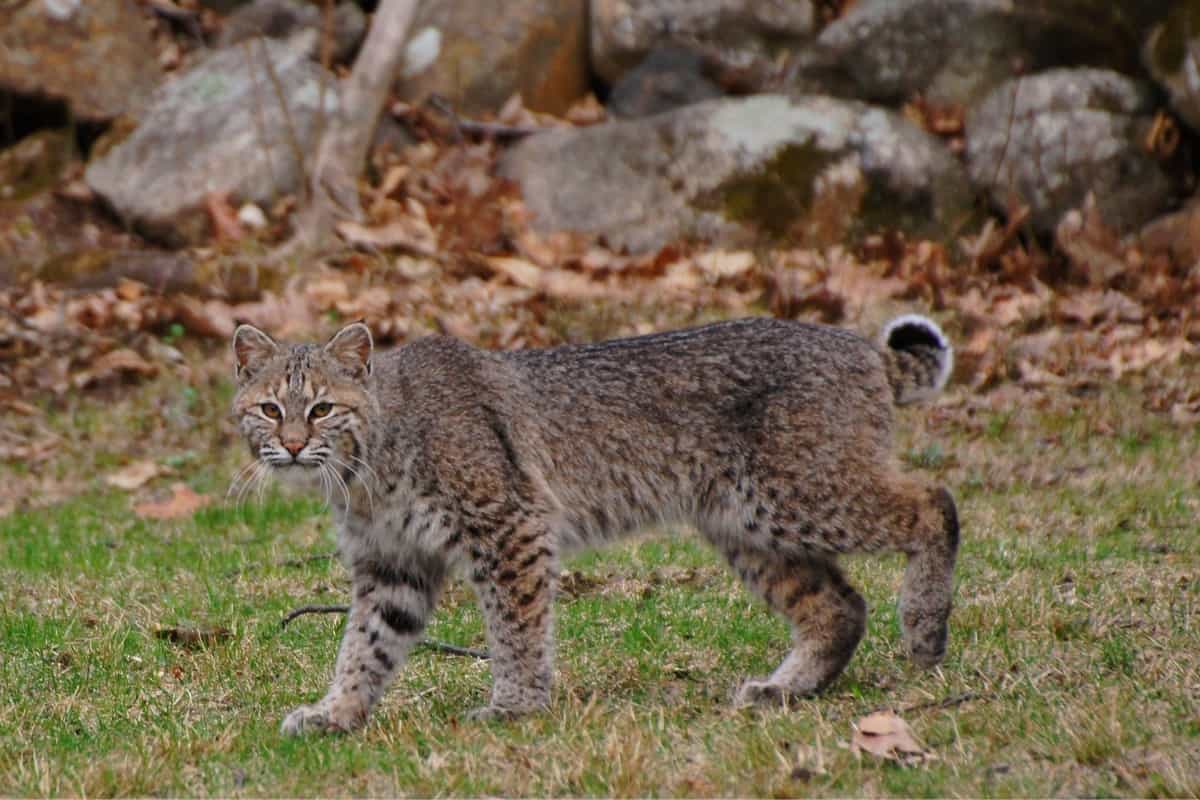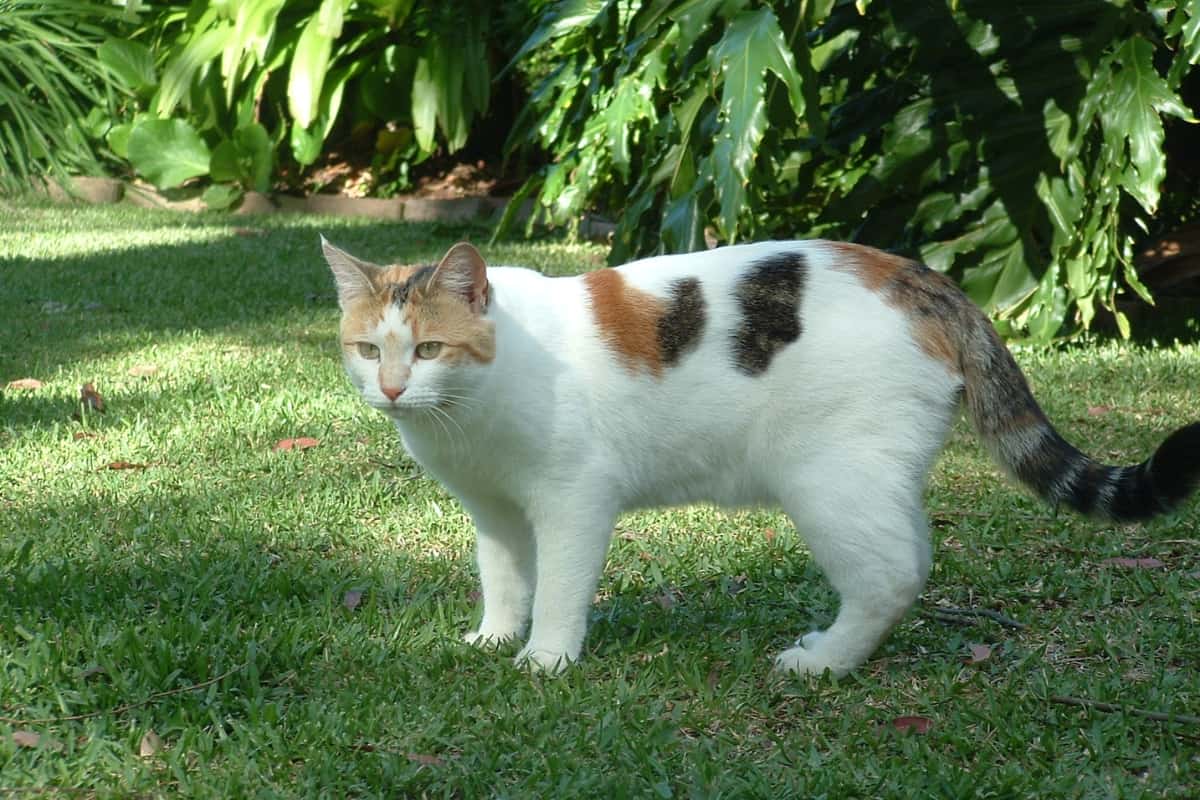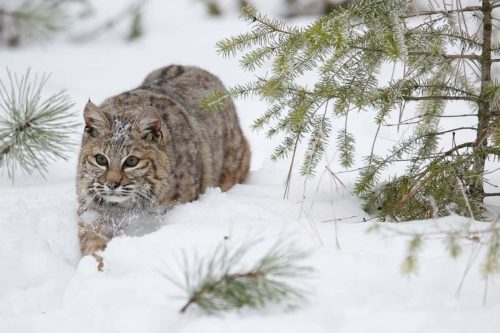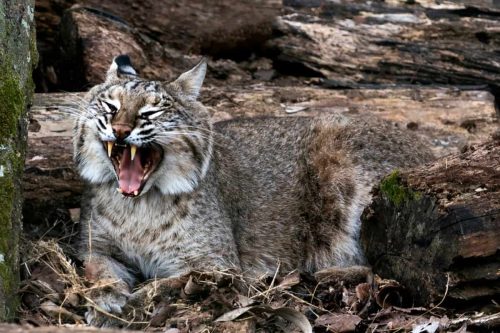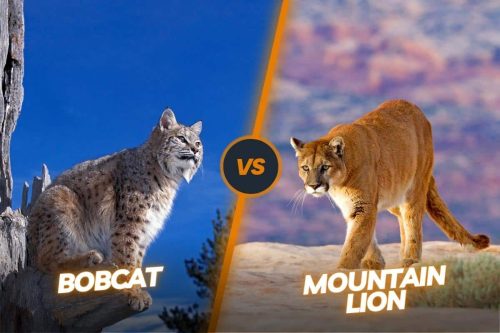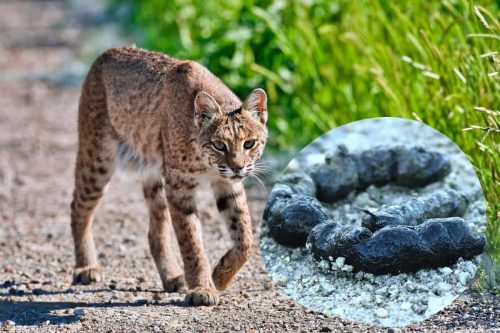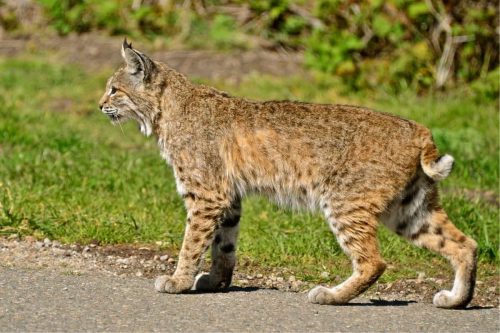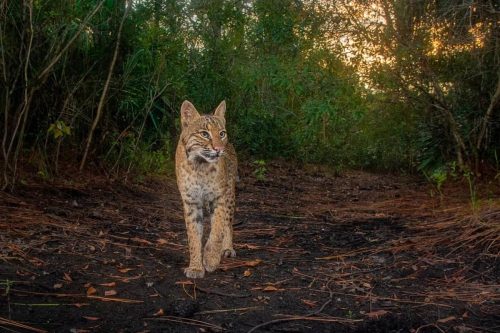Bobcat Cat Vs House Cat: Domestic Feline And Wild Predator
Bobcats are wild cats that belong to the Felidae family and normally exist in very vast quantities in the North American continent. People usually confuse these cats with house cats as you can notice a lot of similarities between them at first glance. In reality, there are many stark differences if we compare bobcat vs house cat. In this article, we are going to dig deep into this issue and compare these cats on the basis of all their features.
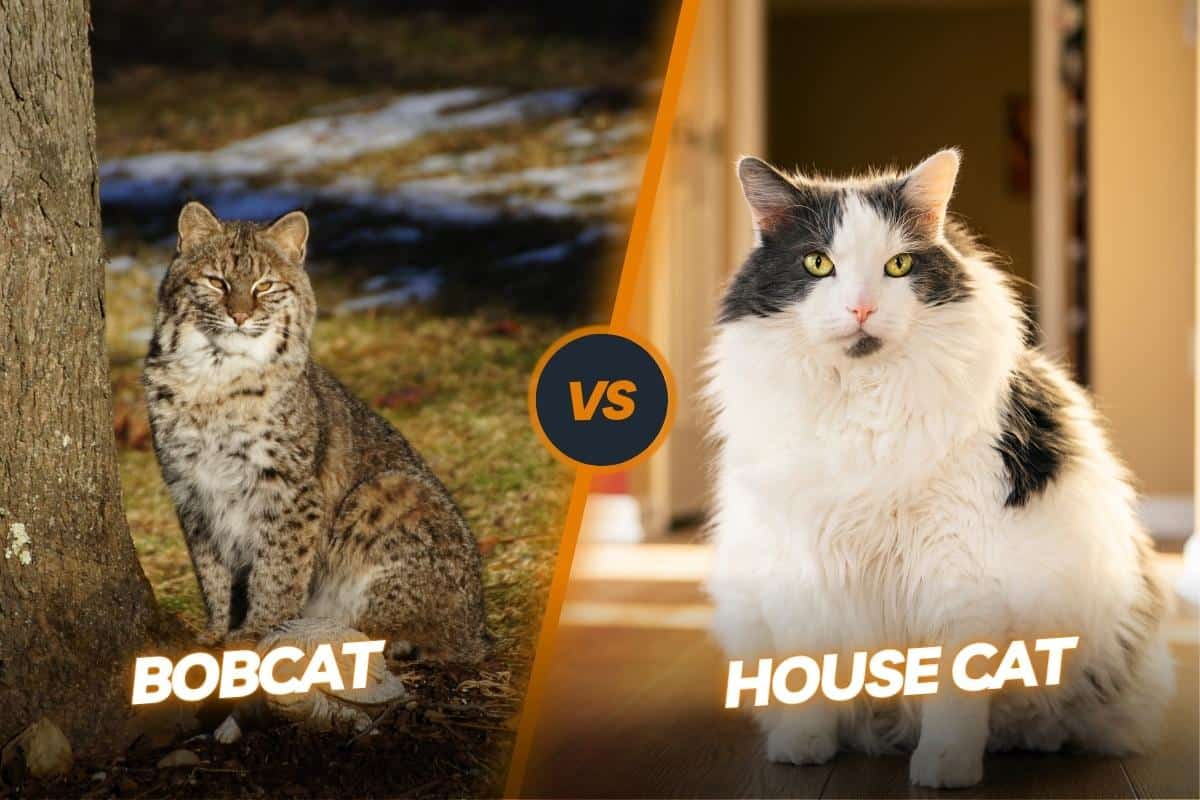
Contents
- What is the difference between a bobcat and a house cat?
- Physical differences between bobcats and house cats
- Some house cats show a lot of resemblance with bobcats
- Do bobcats attack house cats?
- Do bobcats and house cats mate with each other?
- Do bobcats meow like house cats?
- Can bobcats be domesticated?
- Bobcat vs House cat: Who would be the ultimate winner?
- Frequently asked questions
- Conclusion
What is the difference between a bobcat and a house cat?
There are a lot of very distinct differences between these cats. You can easily notice these differences in their fur color, texture, tail, facial features, sound, size, and leg symmetry. We are going through these differences in this article in a very detailed manner.
Physical differences between bobcats and house cats
Let’s have a look at all the physical differences between these cats to clear the picture in our minds about these cats.
| Features | Bobcats | House cats |
|---|---|---|
| Origin | North America | Middle east |
| Size | 35-40 pounds | 8-15 pounds |
| Limb | Almost 30% longer than a house cat | Standard not much noticeable |
| Height | 16 inches | 10 inches |
| Length | 18 inches | 38 inches |
| Tail | 6 inches | 6-12 inches |
| Coat | Spotted | Rarely spotted |
| Cheek | Intact cheeks but not ruff | Ruff’s cheek-like mutton chops |
| Lifespan | 7 years | 10-20 years |
| Domesticated | No | Yes |
Appearance
The basic difference between a bobcat and a house cat comes in terms of their physical appearance. Bobcats have a standard look that doesn’t vary much from one cat to another while the house comes in a variety of shapes and sizes. House also varies in terms of color patterns. There are also a lot of differences in terms of weight, height, and length.
Size: how big is a bobcat compared to a house cat?
Bobcats are quite different from house cats in terms of size. When it comes to weight, bobcats come in the range between 15 to 40 pounds while house cats have the just weight of house cats lie in range between 8 to 11 pounds. When it comes to height, bobcats are 15 inches or 38 cm in height on average while the house cat has a height of 9.5 inches or 24 cm.
When it comes to length, bobcats have an average length of around 37 inches while the average length of a house cat is just 18 inches. It means the length of the bobcat is 2 times the length of the house cat. Overall, we can say that the overall size of the bobcat is almost double the size of the house cat.
Legs: bobcat vs house cat
Bobcats have quite unique legs. The rear legs of the bobcats are slightly longer than the front legs. It gives them an asymmetrical appearance and is not good for their balance. It seems like these cats are bobbing up and down while running.
On the other hand, the legs of the house cats are similar in length. The bodies of the house cats seem parallel to the ground. There is also the benefit of the rear long legs of the bobcats. It greatly helps them in jumping, hunting, swimming, and walking through certain terrains having deep snow and vegetation cover.
Coat pattern: house cat vs bobcat
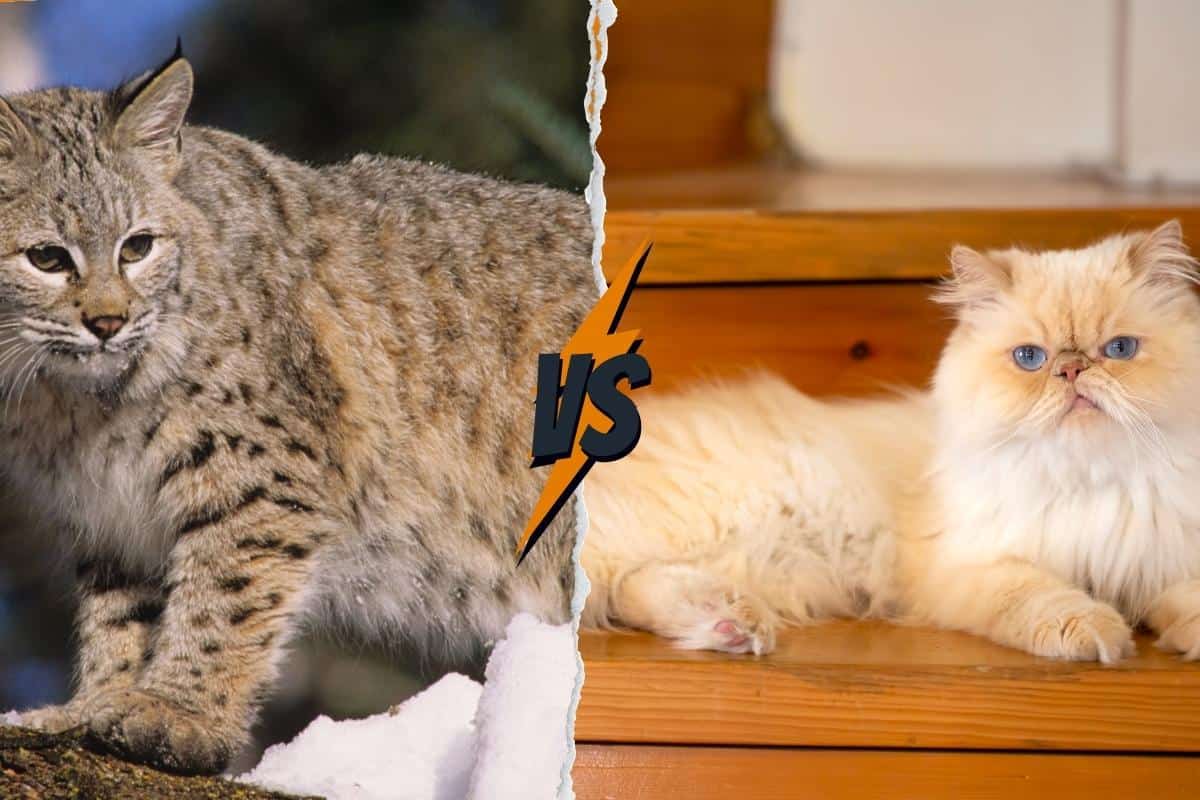
The spotted coat is a distinctive feature of the bobcat. It highly helps in blending or hiding in their habitat or environment. These coats most of the time doesn’t exist in house cat. However, you might notice some minor spots and traces on brown tabby cats. Generally, house cats don’t come with spots pattern on the coat.
There are some breeds of cats like Bengals, Savannah cats, Ocicats, and Egyptian Maus who come with spots and show a lot of resemblance with bobcats. Some breeds like Savannah and Bengal cats are also similar in size to bobcats. But these cats are rarely seen in our backyard.
Demeanor
Bobcats are wild cats and act very wildly in their general behavior. If you try to approach these or accidentally encounter happen with these cats then you can face the consequences of their wild acts. These cats are also highly powerful and aggressive when they attack someone.
House cats can barely damage your property but bobcats are capable of making some serious damage. Moreover, bobcats don’t like to be in the company of other cat species and like to spend most of their time alone. On the other hand, house cats are very fine animals and easily get along with you if you have them as a household pet.
House cats are also attention seekers and like to spend time snuggling up with their partners or human beings. House cats are also good partners for kids, especially girls. However, not every house cat is good enough.
Tail: bobcat vs housecat
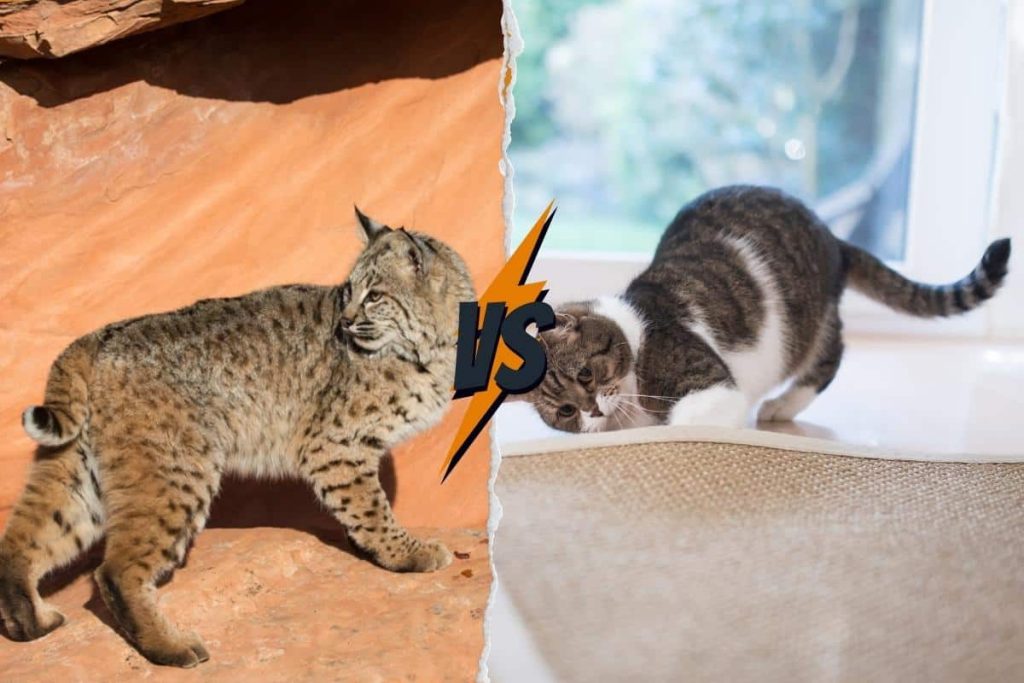
Bobcats are actually known for their bobbed tail. It is a bobbed-shaped tail but it is very much smaller in size. The maximum length of the bobcat tail could be 6 or in extreme cases 7 inches. On the other hand, a house cat has a much longer tail. It could be as long as 12 inches which is almost double the length of a bobcat.
However, some domestic cats also come with just 6 inches of tail length. Other than size, the color of the bobcat cat’s tail is also quite distinctive. Usually, it comes with white color at the bottom with a dark black color tip. You can easily spot the tip of the bobcat even from a very long distance.
On the other hand, house cats normally come with only one color throughout the tail. Two-color tail only happens if the overall color of the cat is black and white.
Licensure
There are a whole lot of differences in this feature. Bobcats are wild cats and it is altogether prohibited to keep these cats as a pet in your household. You cannot just go and buy bobcats from your local pet store. You need to have the proper license to raise or rehabilitate a bobcat as these are internationally protected as well as dangerous species.
That’s why it is necessary to never adopt any bobcat cub from the wilderness or roads. In this case, you must either wait for their mother to come or contact wildlife experts for their rescue. On the other hand, you need to have a license for the adoption of house cats. You just need a proper shelter and some food arrangements for these cats.
Tufts Ear
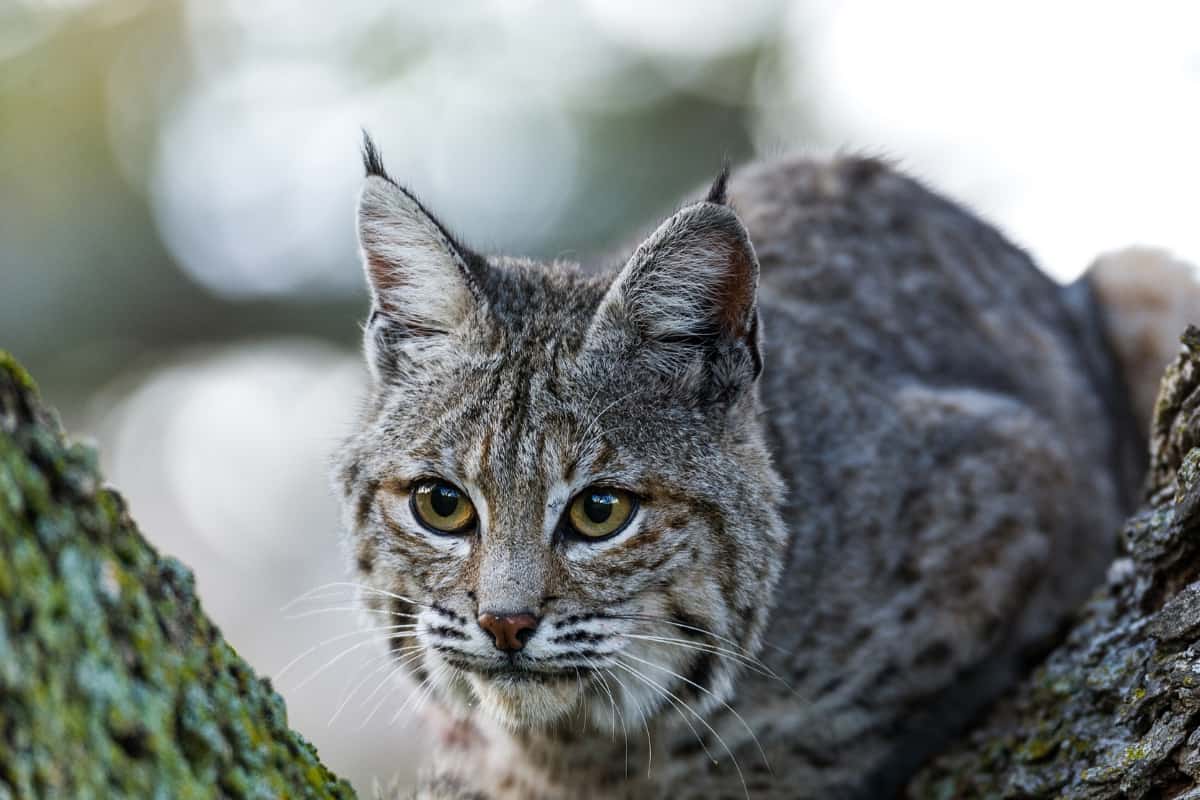
Bobcats belong to the lynx genus and lynx are very well-known for their tuft ears. Bobcats also come with tufts ear but it is very subtle in nature as compared to lynx ears. You might notice some bigger tufts ear even in some Maine Coons than the bobcat. On the other hand, tufts ear is not a feature of a house cat but plenty of house cats also come with tufts ear.
Limb
Bobcats come with much longer limbs than the limbs of a typical house cat. This difference in length is very much noticeable in the bobcats and house cats. The lean limb of the bobcat is a highly distinctive feature of the bobcat.
Tracks
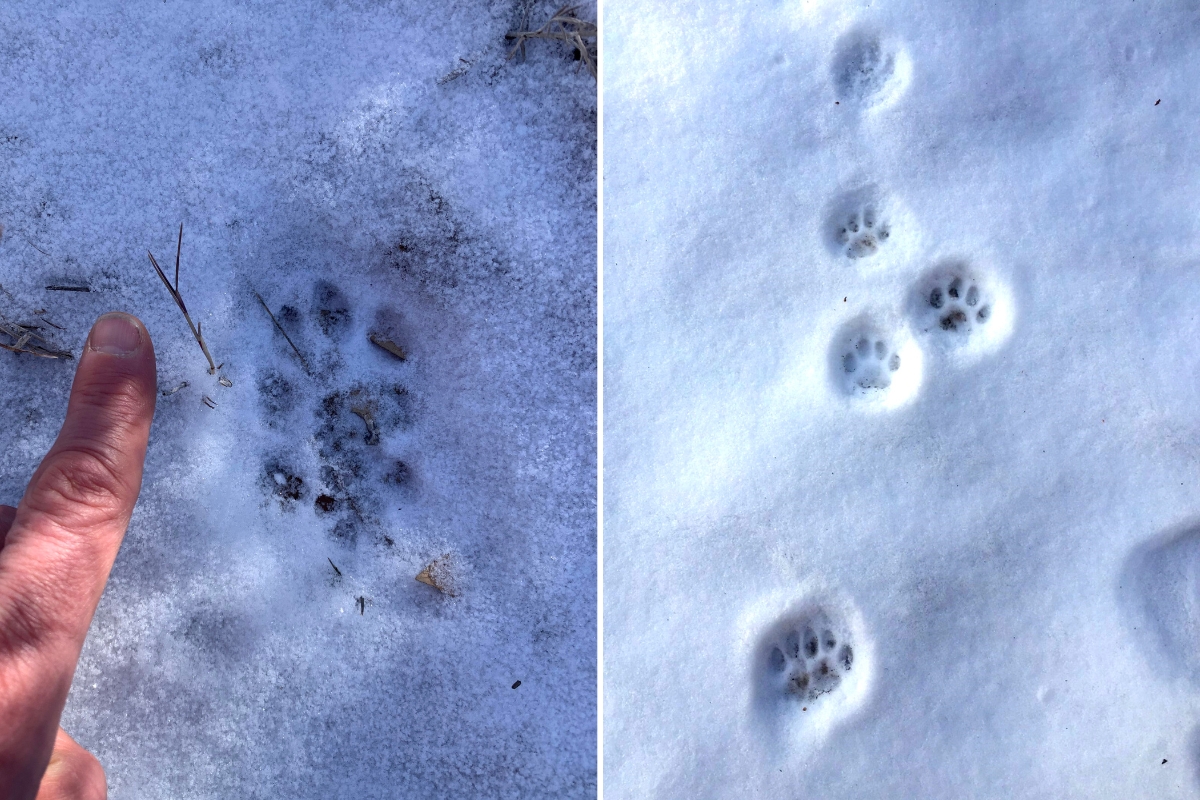
There is a wide difference between the track of a bobcat and a house cat. The track of the bobcat is almost 2.5 inches wide while the track of the house cat is just around 1 inch wide. The track of the feline is gait type which is also called direct register. Bobcats usually try to put their rear foot at the same place where front foot tracks already exist. It means it is extremely difficult to differentiate between the tracks of a bobcat from other cats.
Habitat
Bobcats are the wild cats of the North American continent. You can find a very large quantity of bobcat population in Southern Canada, the central United States of America, and the Northern parts of Mexico. You will not witness these cats in the European and Asian continents.
On the other hand, house cats could be found everywhere in the world. That’s why it is extremely difficult to differentiate between a bobcat and a house cat in the North American region as both species exist in this continent.
Predatory behavior
Bobcats and house cats have ambushed nature while hunting down their prey. First of all, they choose their territory on the base of food availability in any region. Both cats love to eat small mammals like mice, rats, rabbits, and rodents. Sometimes, bobcats also target some large animals if there is food scarcity in their local habitat.
According to the US Department of Agriculture, on average 11000 sheep are killed by bobcats throughout the whole country. On the other hand, house cats might kill birds but not big animals like sheep.
Noises: bobcat vs house cat
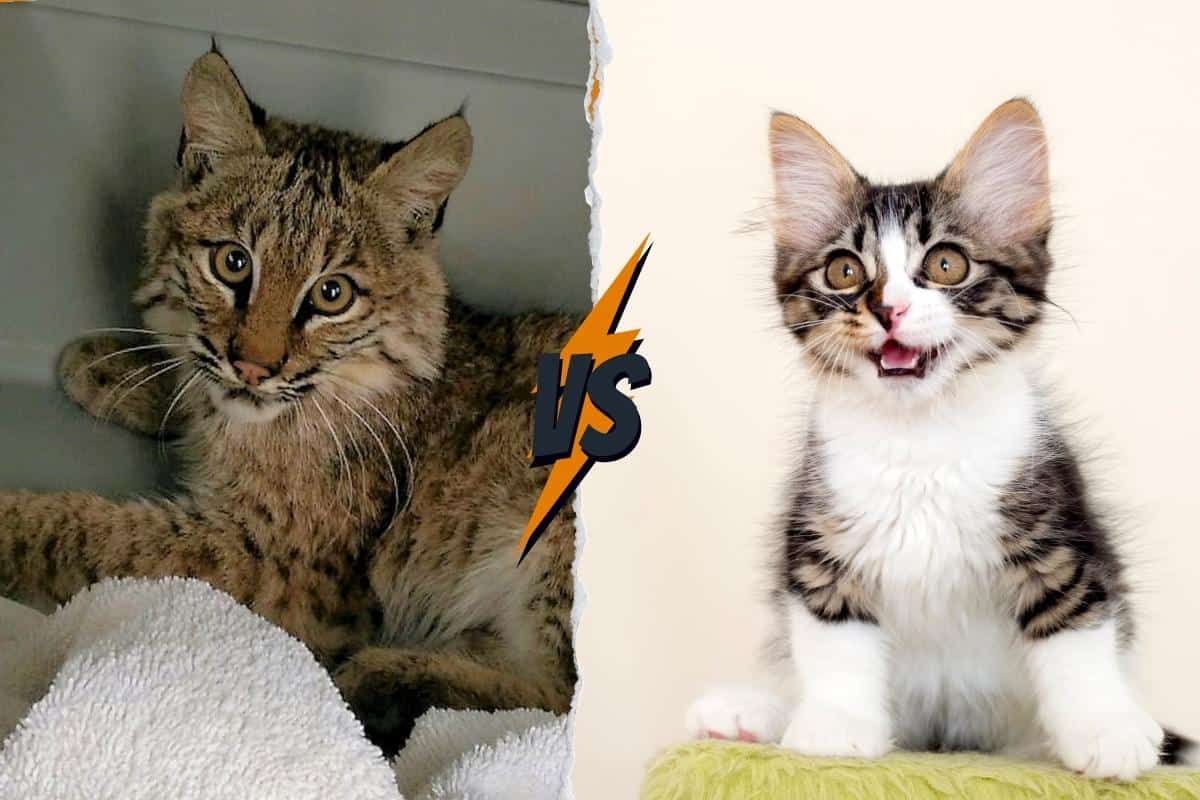
In the initial stage of their life, both bobcats and house Cats kitten make almost the same noises. These are the sounds like purring, hissing, and growling. As the bobcats grow old, the noise of their sound also changes. Old-age bobcats make a sound like women screaming or children crying.
During the mating season, bobcats make very growling sounds. All these sounds are very alarming, especially for new listeners who are not used to these sounds. On the other hand, cats make a meow sound most of the time.
Population: bobcat vs house cat
Bobcats are wild cats of the North American region. You can find an abundance of their population from southern Canada to Northern Mexico. They are adaptable to live and survive in a variety of environments like deserts, forests, swamps, mountains, etc. The population of bobcats is spread out throughout the North American region but it is highly concentrated in the central USA.
It has been estimated that there is a total of almost 1 million bobcat population in this continent. On the other hand, house cats could be found in every nook and corner of the world. These cats have a very huge population in the world. It was roughly estimated that 380 million domestic cats throughout all over the world.
Some house cats show a lot of resemblance with bobcats
There are special cat breeds that show extraordinary resemblance with their bobcat cousins. One of the most prominent among these cats is the Pixie Bob. It has also been said that this cat is actually a mixture of a bobcat and a barn cat. However, there is no DNA-like proof available in this regard. It is easy to notice these cats in every nook and corner.
Do bobcats attack house cats?
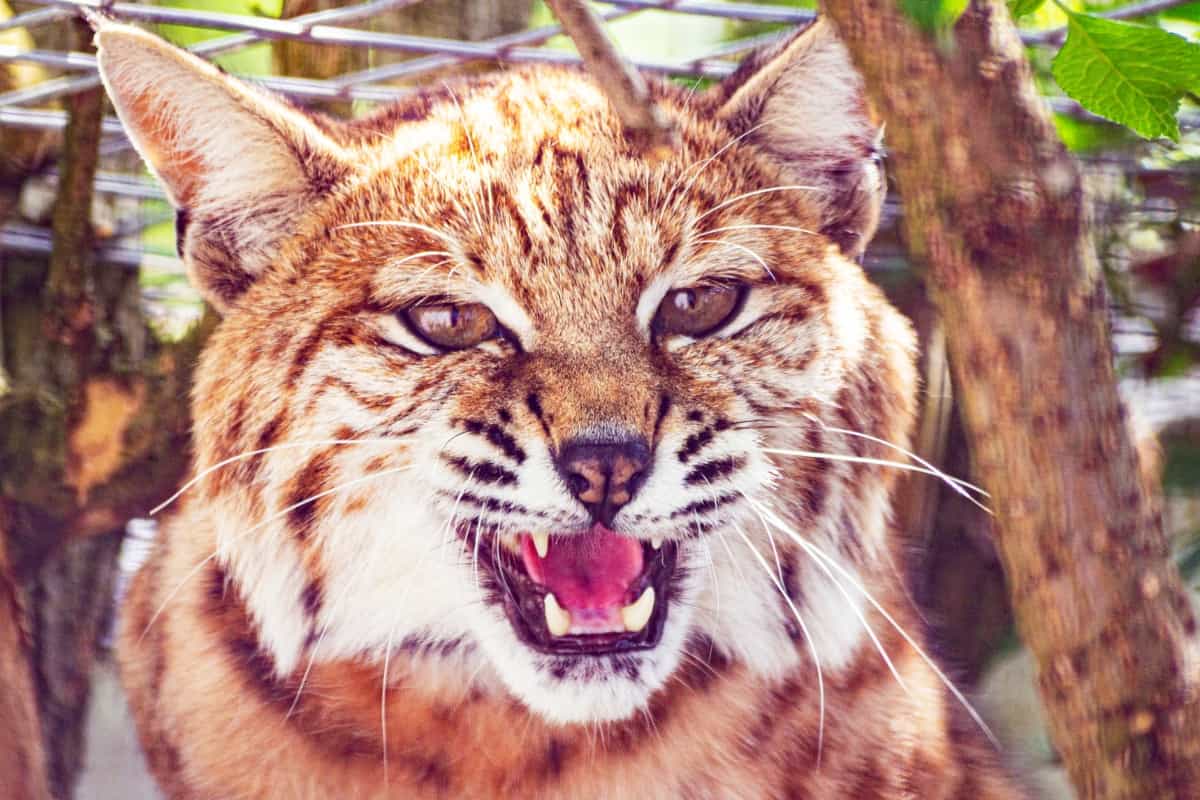
Yes, bobcats will definitely attack house cats if these wild cats find any opportunity. With the increasing settlements of humans in the bobcat’s habitat, interactions between bobcats and house cats have also increased. Bobcats, being opportunistic hunters doesn’t lose any opportunity to attack and kill house cats or pets.
Nowadays, pet dogs, cats, and other pets have become the source of food for bobcats. Despite being feline species, bobcats don’t let house cats go free if they find them. Thus, it is better to keep your pet animals away from bobcats.
Do bobcats and house cats mate with each other?
Both bobcats and house cats are feline species. Still, there is no chance of their mating with each other. It means these animals are not capable of reproducing offspring. Whenever an encounter happens between them, it ends in conflict with each other. In the end, bobcats kill the house cats.
Do bobcats meow like house cats?
Bobcats can make a lot of sounds other than just meowing. These sounds include meowing, chirping, hissing, chuffing, thrilling, yowling, etc. Yes, bobcats can meow like house cats but they don’t do it for human beings and only do it in search of their kitten, and kittens also respond in same sound. The sound of the bobcat meow will be shorter but higher pitched.
Can bobcats be domesticated?
No, it is not possible for the bobcats to be domesticated as these are wild cats and wildness is in their nature. These cats might appear cute or innocent from their look but you have to face some disastrous consequences if you spend a lot of time with these cats. That’s why it is illegal to keep these cats as house cats. You need to have a permit for this. There is also a very big difference between domestication and taming. Domestication is actually related to genetic modification which is happening from one generation to another.
Bobcat vs House cat: Who would be the ultimate winner?
In a fight between a bobcat and a house cat, the bobcat would likely emerge as the victor. Bobcats are much larger and stronger than house cats, and have sharp claws and teeth that are designed for hunting and killing prey. House cats are not equipped to defend themselves against a wild predator like a bobcat and would be unlikely to survive such a confrontation.
Frequently asked questions
Conclusion
Bobcats and house cats are two different species. People have been confused about them due to a lot of resemblance in their physical appearance. However, many differences exist between them in terms of size, diet, habitat, etc. we have tried our best to highlight all of these differences and clear all your confusion about these cats. In this article, we have also tried to answer certain other things regarding these cats.

Izzy is an experienced ranch worker who has a passion for exploring nature and getting up close to wildlife. With her connections to various animal organizations, Izzy is well-versed in animal care and rehabilitation.

